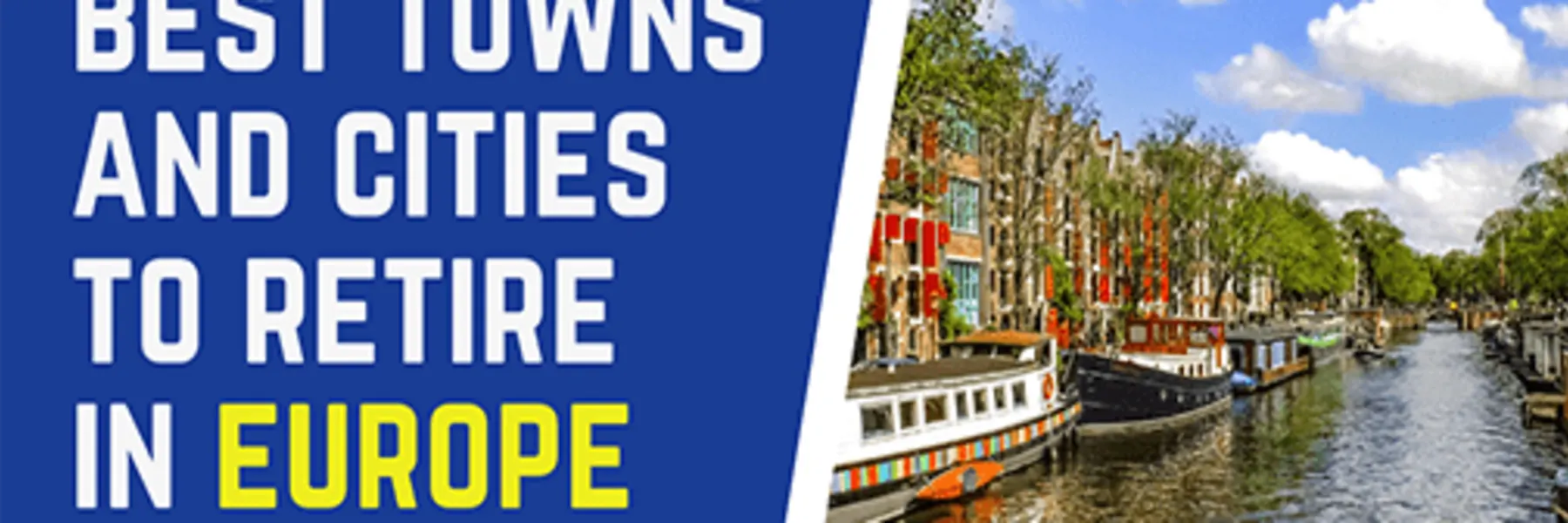Europe has so much to offer a potential expat…great food, a diverse choice of cultures, the stunning countryside where life is quiet and relaxed and the buzz of the rat race seems a million miles away, awe-inspiring mountains for skiing, and soft, sandy beaches for wiling away summer days…
But isn’t Europe expensive? That’s the observation we hear most about Europe and the answer is that yes, it can be…unless you know the right places to look!
Of course, you’ve heard of Paris, Florence, Barcelona, and the like. But beyond those well-known metropolises, you have the rest of a vast continent—a treasure trove of time-worn towns and affable villages... secret islands and dramatic landscapes.
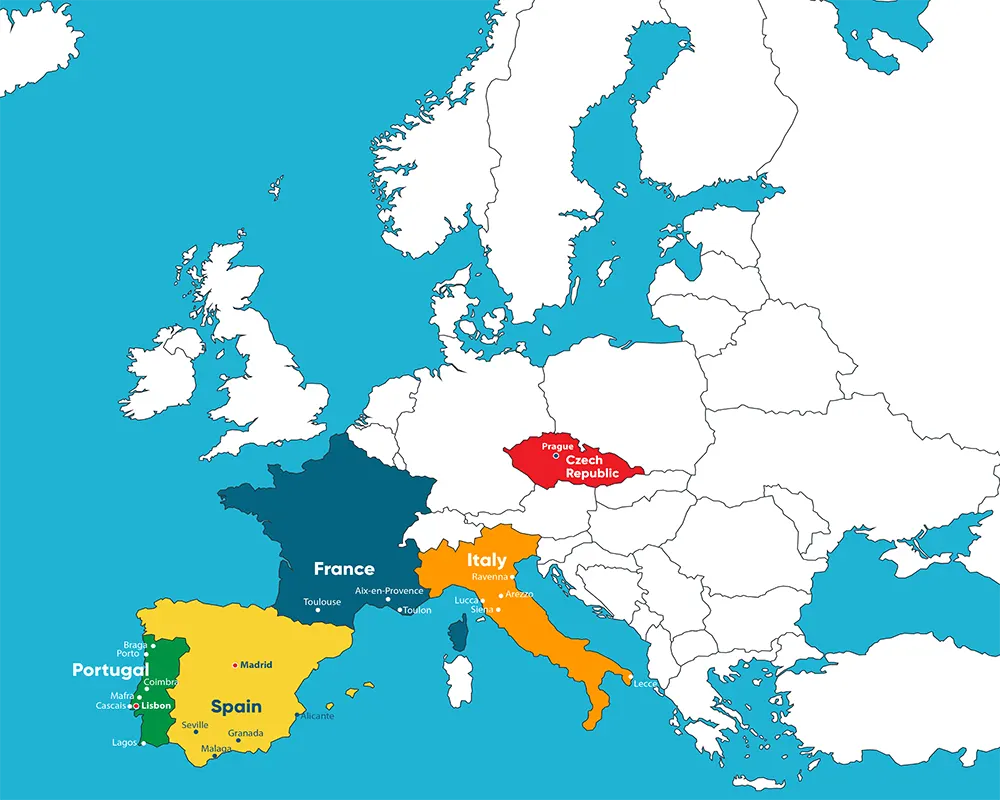
These are spots where old traditions hold sway, costs are far lower than what you’ll find in the best-known cities, the food and wine are excellent, the culture is rich, the history deep, and the pace of life is slow and civil. Read on to learn which towns and cities have made our list.Portugal
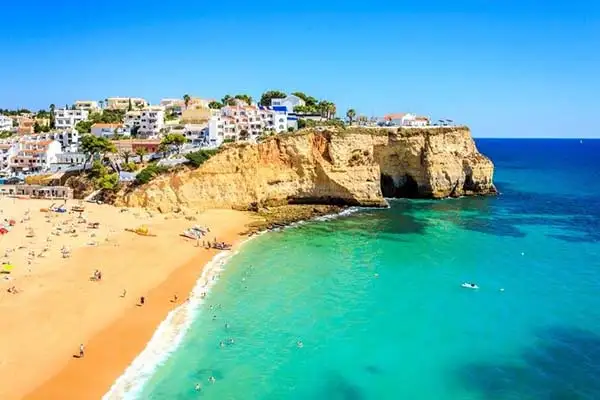
Portugal offers a rugged coastline of cliffs, coves, and whitewashed windmills. Its Atlantic beaches resemble broad golden ribbons. Slumbering inland are historic castle towns. Small villages come surrounded by terraced olive groves, citrus orchards, and vineyards. Stone walls trail clouds of blue-mauve morning glory flowers...and wisteria drapes village homes.
This country comes in first as the world’s best place to retire for 2020 in our International Living Annual Global Retirement Index—and it’s with reason: living in Portugal gives you an abundance of choices: you can base yourself in a sleepy fishing village, a thriving beach resort, a mountain retreat or in the heart of vibrant Lisbon—where the restaurants, museums, and attractions rival anything else in Europe.
A couple can live comfortably in Lisbon for $2,900 per month, and for even less in the interior.
Lagos
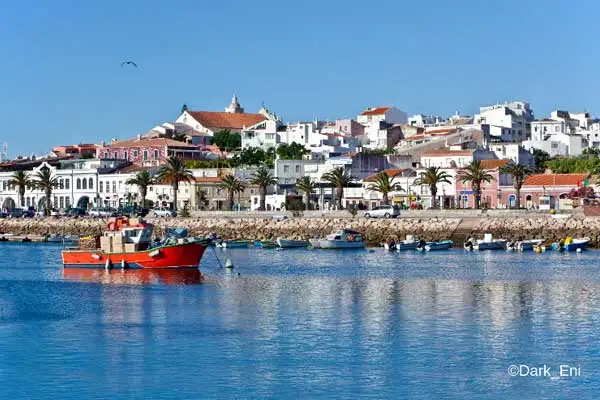
Lagos is a popular coastal town, yet somewhat less touristy than others. The cities next door, such as Portimão and Silves, have points in their favor, but Lagos is the winner in livability and proximity to amenities. It is located on the Bensafrim River and offers not only some fine beaches (especially Praia Dona Ana, voted the second most beautiful beach in Portugal) and watersports, but also a yacht-dotted marina and a host of restaurants and bars supporting an active night scene. Everything from quintessential fast-food to gourmet is represented along the “marginal,” the name given to the road/walkway along a coastal area. There is ample shopping and even a few stores specializing in imported foods.
The center of the marina area features a merry-go-round for the kids and cafés, bars, and an Irish pub or two for the adults. A diverse collection of eclectic shops mixes well with the obligatory beach fare. In short, it is a sweet combination of ordinary residential living and resort offerings.
Lisbon
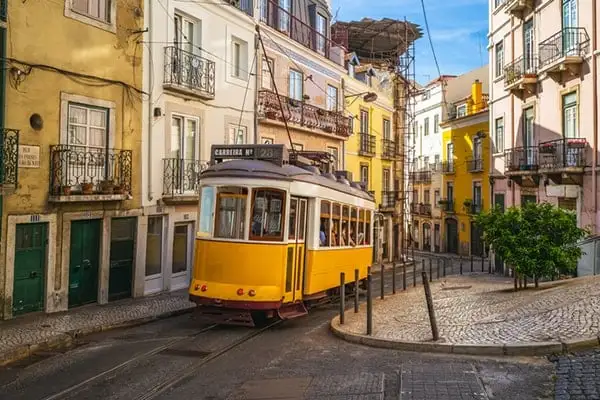
The capital city that sits on seven hills, with its azulejo-splashed architecture and tram system maneuvering labyrinthine cobblestone alleys, is one of the jewels of Western Europe. In addition to the natural beauty of the coastal city, Lisbon boasts museums, a historic tower, and a plentitude of restaurants, cafés, and bars (and, as partygoers quickly discover, no open-container laws). It features several Michelin-starred restaurants among its diverse offerings, which are more affordable than their counterparts in other major cities around the world.
The neighborhoods offer something for everyone: stunning views and the strains of fado in Castelo, Alfama, and Mouraria; history and culture in Belém; shopping and dining in Baixa, Rossio, and Restauradores; action-packed nightlife in Barrio Alto, Bica, and Cais do Sodré. The whole city is tied together by an extensive public transport system featuring buses, subway lines, international train connections, cable cars, and even funiculars to ascend some of the steepest hills.
Cascais

Situated 21 miles west of Lisbon, Cascais rose to prominence in the 19th century as the summer playground of the royal family. King Luís I ordered the governor’s quarters in the Cidadela, a fortress perched high on a hill overlooking the bay, to be refurbished to accommodate him. He—and later King Carlos I—kept his yacht moored in the bay. Voilà, the birth of what became known as the “Portuguese Riviera.”
Today it is a prime tourist destination but also a major hub for expats, especially from the U.K. and other English-speaking countries. Although 20 miles from the center of Lisbon, it is part of the greater metropolitan area and is connected to it by bus and train. Even the subway comes part of the way to Cascais. But most full-time residents find all they need right in town. The airport, a 40-minute drive depending on traffic and time of day, might be the only reason to need to go to Lisbon.
Mafra
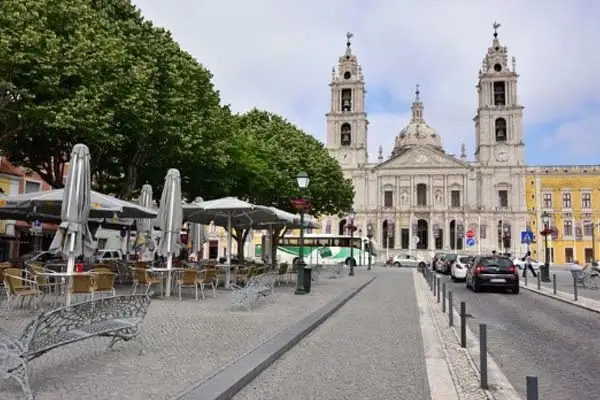
The town of Mafra lies just 30 minutes northwest of Lisbon International Airport. A population of about 76,000 spread over 112 square miles translates to the feel of a thriving yet pleasantly-paced small city. Most of the tree-lined streets, including the main boulevard of Avenida da Liberdade, are covered with calçada Portuguesa, the traditional black-and-white Portuguese pavement. Green areas bursting with blossoms year-round are dotted everywhere, and on residential streets you’ll find private homes of varying sizes as well as apartment buildings.
Mafra is not the place to be if you’re the beachy type. But if you want to escape snow and sleet, yet still don’t want to give up seasons, this city may very well interest you.
Coimbra
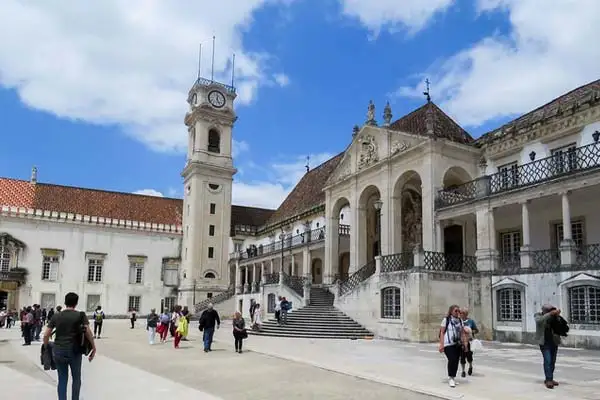
The capital of Portugal from 1131 until 1255, Coimbra is located halfway between Porto and Lisbon on the Mondego River. The University of Coimbra, one of the oldest in the western world, sits high above the well-preserved medieval old town. Built on the site of a former palace, the university is famed for its Joanine Baroque library, 18th-century bell tower, and black-cloaked student population.
That being said, the town surrounding the university is quaint and agreeable rather than wild and party-like. There are many restaurants of all genres due to the diversity of the inhabitants, and two main shopping centers with a wide choice of stores and entertainment. To top it off, the city is very walkable, even with its many hills and cobbled alleyways.
Porto
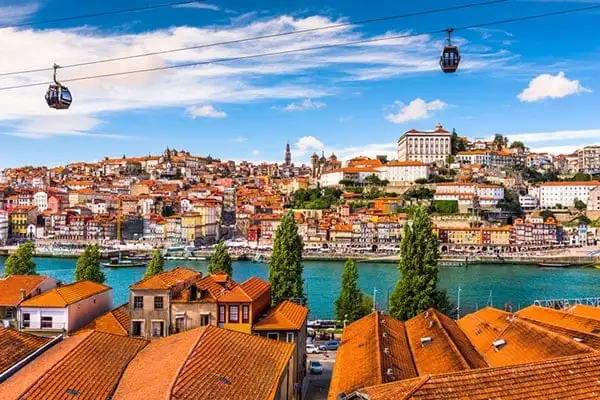
Porto, the second largest metropolitan area in Portugal after Lisbon, is located on the Douro River where it flows into the Atlantic. The city is home less than 240,000 people in the city center (about 2.4 million in the greater metropolitan area) and has a small city’s feel and friendliness. But it’s also a thriving international business city, with many expats finding all the amenities they need, including an international airport.
The richness of culture available makes the city an ideal place for retirement. You’ll be surrounded by elegant parks with fountains, statues, and exotic plants, leafy boulevards, and cobbled streets lined with historic buildings. Porto’s cool, mild, climate means temperature averages around 65 F in the dry summer season, and 50 F in winter, which lasts from December through March and can be wet.
Braga
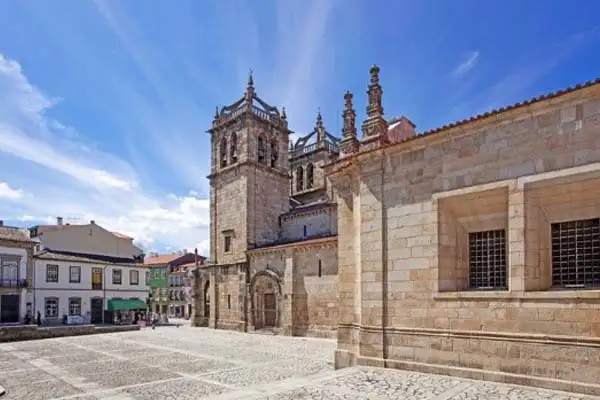
Like so many cities in Portugal, Braga’s history was influenced by Roman occupation, and the city’s architecture and landscape vividly recall those ancient days. Considered the oldest city in Portugal, Braga lies approximately 21 miles due east of the beach and windsurfing destination of Esposende.
The centerpiece of the town is the large plaza in the downtown area, with a grand fountain, the cathedral, a few museums, bookstores, restaurants, and shops all on a primarily pedestrian promenade. The cathedral, or Sé as they are known in Portugal, is the seat of a diocese that dates back to the third century AD; the building itself dates to the eleventh century.France
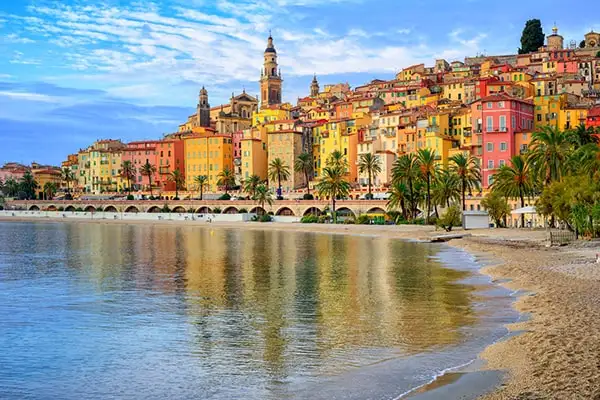
France is a country of snow-capped Alpine peaks, stylish beach resorts, and a glorious green and golden interior where ancient towns cast shimmering reflections onto lazy rivers.
But it’s not simply splendid landscapes. There are feast days, fairs, and festivals. Then there’s the culture, legends, and long centuries of history. It’s the feeling you get when you’re exploring a medieval town…that you’ve somehow fallen through a crack in time and re-emerged in the High Middle Ages.
And it’s all those civilized pleasures the French have got down to a fine art. The wonderful food and long dinners that linger for three hours…the entertaining conversations…the stylish films that dare not deign to insult a cinema-goer’s intelligence...
“Sure,” you’re thinking, “of course France has the world’s best quality of life—for anyone who can afford it. Well, that rules me out.” Au contraire.
Whether you dream of a city pied-à-terre…or a rambling farmhouse among the sunflowers…or a village house wrapped in wisteria-hung memories of long ago, France is far more affordable than you might think. In fact, there are many parts of the country where habitable homes in storybook settings cost less than $180,000. You can live comfortably in France on around $2,000 per month.
Toulon
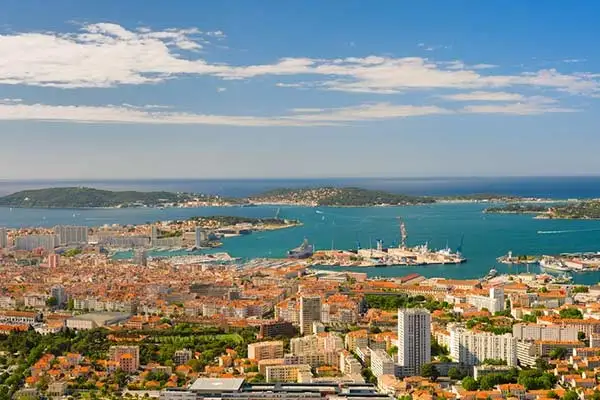
Given its ideal placement along the French Riviera, the coastal city of Toulon in southeastern France provides an idyllic lifestyle for residents and short-term visitors. Away from the hustle-and-bustle of big “resort” towns like Nice, Cannes, and St. Tropez, unassuming Toulon lies a bit off the radar and residents wouldn’t have it any other way.
Retirees in Toulon can expect a slow pace of life with a focus on the outdoors and social gatherings. Typical days can include a morning walk along the Mediterranean, followed by a coffee in a seaside café and later a long lunch at a local bistro. Afternoons can be spent meeting up with friends or attending local art, music, or food festivals. Given Toulon’s busy social calendar, there’s always something going on.
Aix-en-Provence
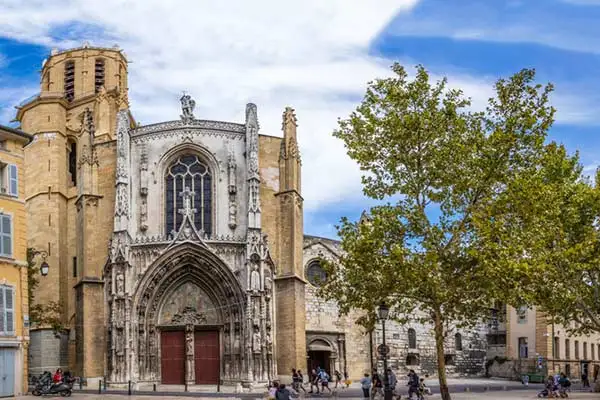
Aix is one of the top choices for Americans wishing to retire in Southern France. Other Europeans, as well as the French themselves, are drawn to the city’s vibrant lifestyle, great weather, and cultural scene. This makes Aix-en-Provence a slightly more expensive retirement choice than other destinations in the south. Nonetheless, since the city is not along the popular Côte d’Azur with its sought-after Mediterranean views, prices in Aix still remain reasonable and well-below comparable American cities.
Retirees in Aix enjoy a rich and varied lifestyle with activities on the city’s active social calendar. Unlike other cities in Provence, which tend to become a bit “sleepy” outside the spring and summer months, Aix-en-Provence stays “open for business” throughout the fall and winter seasons. There’s always a festival to attend (gourmet, wine, theater, cultural, or artistic) or an exhibition to visit.
Another benefit to retiring in Aix is the large, English-speaking expat population that exists in the region.
Toulouse
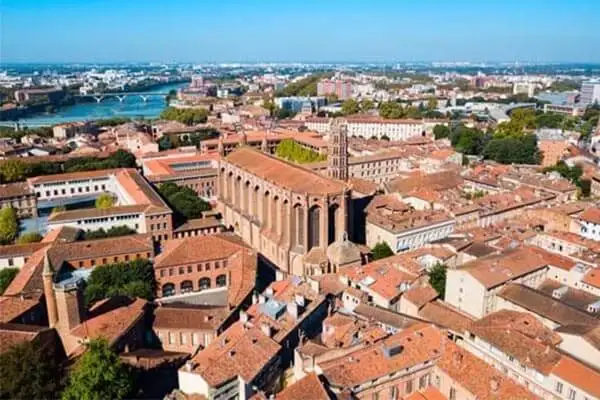
The southwestern area of France, and particularly Toulouse, is a very attractive option for retirees. Not only is France known for its high standard of living and quality healthcare system, but it also offers myriad activities for its residents; cultural, gourmet, intellectual pursuits, hobbies and crafts, and sports to name a few.
Located halfway between the Atlantic and the Mediterranean Sea, and a stone’s throw from the Spanish border, Toulouse has a very open and lively culture, hosting some 1,000 events on average every year. There’s always a good excuse for a “fiesta”, and given that the city is a foodie-destination par excellence, a lot of the town’s social life centers around gourmet activities. Residents take pride in their regional products and wines, and Toulouse boasts 11 Michelin-star restaurants.Spain
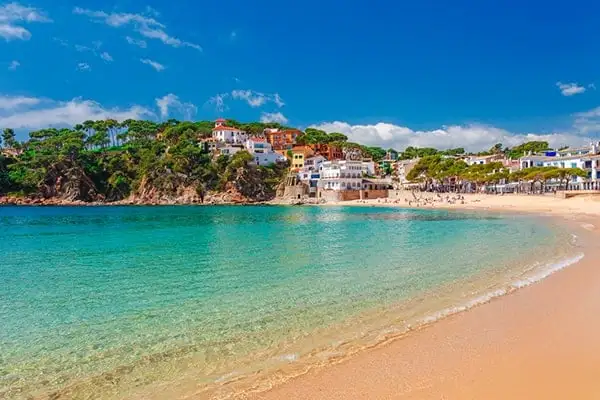
Spain offers you sophistication, charm, comfort. Imagine lingering into the wee hours over drinks in color-splashed cities...savoring scrumptious paella on a warm summer afternoon, the Mediterranean sparkling in the background...watching the moonlight play off the high walls of the thousand-year-old Alhambra...or sitting on a balcony in Seville overlooking the largest Gothic church in the world, sipping a chilled glass of cava...
It’s not surprising that Spain is the most popular country for Europeans seeking a home overseas. Away from the tourist trail and the hordes of holidaymakers, there are incredibly beautiful beaches, calm seas, pretty countryside, and small historic towns just waiting to be explored.
A couple can live comfortably in Spain on around $2,400 per month.
Seville

For many, Seville (in Spanish, Sevilla) is the romantic, passionate heart of Andalucía, the large Autonomous Community that covers much of southern Spain. A city of nearly infinite charm, Seville (population about 700,000 in the city and 1.5 million in the greater metro area) is a mecca for those who love gracious living, southern Spanish style.
Winters are relatively mild, with average highs in the 60s F and lows in the 40s F. But summer temperatures, especially in July and August, can soar well over 100 F, with next to no humidity. How better, then, to spend the hot days than in a house with thick stone walls to keep out the heat and a placid central patio, perhaps with a tinkling fountain in the center, and masses of flowers around it? This lifestyle has appealed to Sevillanos for centuries…and in this city, tradition runs strong.
Madrid

This sophisticated European capital offers first-world infrastructure, thriving creative life, and sunshine at a modest price. Located in the center of the Iberian Peninsula, at an altitude of 2,000 feet, Madrid’s climate is warm and dry. In fact, it’s the driest capital in Europe with most of its average annual 16.6 inches of rain falling in spring and autumn. Winters are mild with low temperatures in the 30s F, but summers can be scorching. Many Madrileños escape to the beach for the entire month of August.
Madrileños love to socialize. Sidewalk cafes, terrazas, and parks are always crowded and convivial. Meeting friends in bars and coffee shops for conversation and camaraderie is a sacrosanct ritual that is not impacted by any financial crisis. During the hot summer months, Madrileños live at night. Streets are quiet during the day, but cafes fill to overflowing after sundown.
Granada
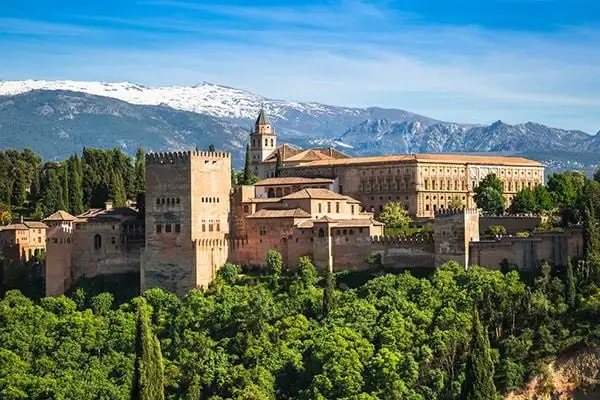
Reams of poetry and prose have been written about Granada, but don’t hold that against it. This city is genuinely beautiful, and despite the tourists and the hype, it still breathes romance.
Its hilly location, with the towers of the Alhambra looming over all, is superb. Across from and around the Alhambra lie the winding streets of the medieval Moorish quarter, the Albaicín, with its stone houses and flower-bedecked balconies.
Tourists are here pretty much all year. The city is thick with them in the summer, when you’ll need reservations if you want to see the Alhambra (and you do). The rest of the year, the city is not so packed. The upside to tourism is that you’re likely to find more locals in the service sector—such as waiters and shop attendants—who speak some English. And thanks to the many young tourists, Granada has an attractively youthful ambience, a lively bar and tapas scene, and plenty of good eats and lodgings at affordable prices.
Alicante
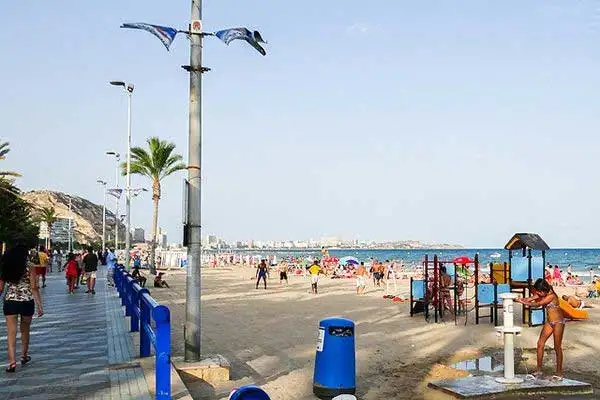
Alicante lies on the Costa Blanca, a 120-mile stretch along Spain’s eastern Mediterranean coast. But Alicante is the provincial capital, the largest city, and the communications hub for this entire coast.
It’s a charming city, and a convenient place to retire. Alicante’s old town, or Casco Histórico, which lies close to the sea, is a neighborhood of winding streets, shops, and a wealth of restaurants, with the towering hulk of the castle of Santa Bárbara at its north end. Beyond the seaside and the old city lie modern neighborhoods of apartment buildings, shady parks, and—just a 10-minute walk from the sea—the Mercado Central, the city’s daily indoor market.
Málaga
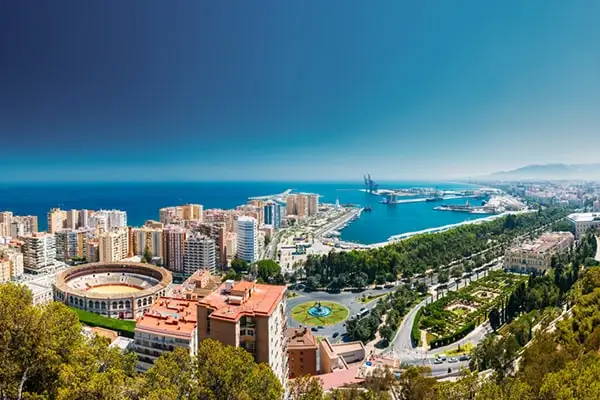
Málaga, on Spain’s southern Mediterranean Coast, is the gateway to the Costa del Sol, long one of Spain’s biggest beach-tourism regions. Málaga’s international airport greets more than 14 million tourists, primarily Europeans, each year on their way to Torremolinos, Marbella, and a dozen or more whitewashed villages along this coast that today make their living from tourism.
Incredibly tourist-friendly, the city center is also consumption-savvy: It’s a disciplined soul who can pass by the cheerful outdoor cafés, the ice cream parlors, and the many beckoning shops without pulling out their wallet to buy something. Who would want to forego those pleasures on a bright, sunny day, anyway? And in Málaga, about 300 days a year are sunny and bright, with average annual temperatures ranging from 55 F to 73 F.Czech Republic
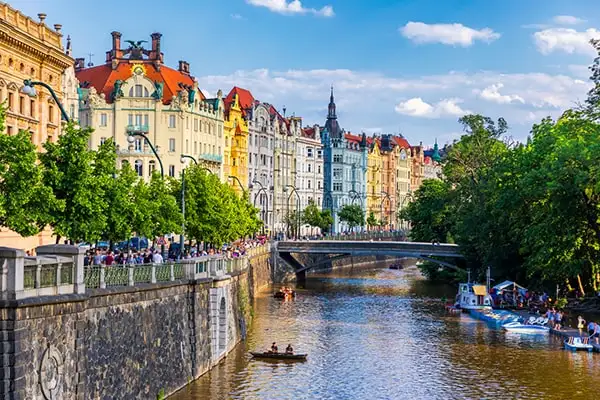
People hear “Czech Republic” and reflexively think “Eastern Europe.” It’s a mental trick resulting from the fact that Czechoslovakia was once part of the communist Eastern Bloc of countries that were affiliated with the former Soviet Union. In reality, Prague, the Czech capital, sits farther West than Vienna, Austria, a city and a country no one ever assumes is Eastern European.
The Czech Republic actually is at the heart of Central Europe. And its capital, Prague, is easily one of the most beautiful, ancient, Old World cities on the European continent. Czechoslovakia, and especially Prague, never experienced the devastating bombing raids that destroyed so many European cities during World War II. As such, the country and her cities still reflect much of their 1,000+ years of history.
For a European capital, Prague represents a great lifestyle at a great value. You can generally expect to spend $1,900 in a month to call Prague home.
Prague
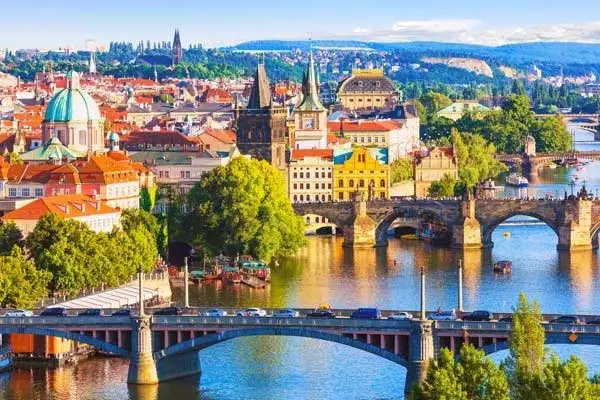
Unlike so much of urban Europe, Prague was essentially undamaged by World War II and, thus, the streets are crammed with buildings that span the entirety of the architectural movements in Europe over the last thousand years—Romanesque, Gothic, Renaissance, and Baroque, up through Cubism, Stalinist, and Post-1989. The Prague Castle complex, standing sentinel on a hill overlooking the city, is the largest in the world. As such, UNESCO has named Prague’s entire Old Town as a World Heritage site.
It is an increasingly modern city, with all the creature comforts of Anytown USA. It’s home to a diverse food scene, a high standard of living, high-quality healthcare, an expansive arts culture, parks big and small, and endless opportunities for walking and exploring. And, best of it, Prague offers an affordable lifestyle.Italy

Italy is well worth your attention. There you’ll find centuries-old olive groves…dramatic cliffs rising above the turquoise sea…time-burnished towns with ornate baroque architecture...and more. Even if you’ve never been there, Italy is one of those places that tugs at the heartstrings. And once you have been there, you’re always looking for reasons to go back.
Whether it’s villas and villettas, farmhouses, tower houses, village houses, medieval townhouses, chalets in the mountains, apartments in the city or at the seaside—there are a variety of homes to choose from.
And contrary to popular belief, you don’t have to spend big dollars to get yourself an Italian hideaway, permanent residence, or vacation home. If you look outside of the main cities and tourist traps you can find beautiful homes for very little money.
A couple living in Lazio, the region that contains the capital, Rome, could expect to spend between $2,409 to $2,619 per month.
Lucca
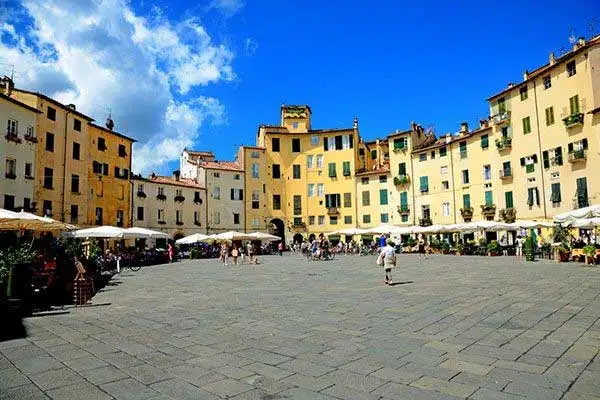
Sometimes overlooked by tourists who are understandably caught up in the museums and other attractions of Florence, the ancient city of Lucca is well worth a visit in its own right. It is perfect for a day trip, or if you have more time, it is also a great base from which to explore Pisa and Sienna to the south, Versilia and the coast to the west, or the Apuan Alps of northern Tuscany.
This convenient central location in Tuscany has caused Lucca some grief in its over 2,000 years of history, but being the center of many conflicts from Roman times all the way to the 16th century and beyond gave rise to Lucca’s most distinctive architectural feature: the impressive stone walls that surround and enclose the historic district of this fascinating Italian town.
Arezzo
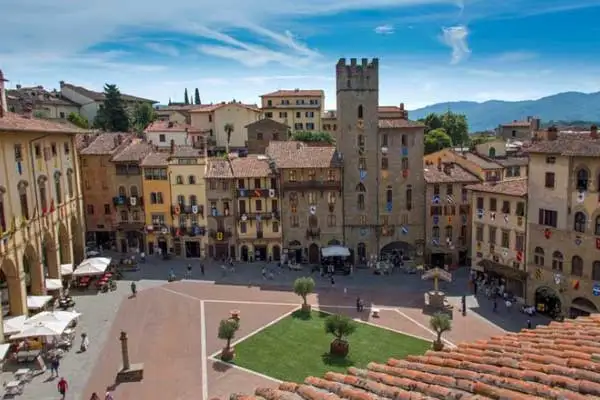
In eastern Tuscany, Arezzo is a real charmer, whose medieval and Renaissance splendor combine to give the city an aristocratic air. It’s hard not to draw parallels to Florence. Arezzo also fell under the realm of the Medici’s grand duchy for a time, and shades of Florence abound in its public buildings, aristocratic palaces, churches, and artwork. And like Florence, there is ground-breaking artwork by Renaissance masters scattered in museums and churches all around Arezzo.
Elegant yet unhurried, Arezzo brings together the best of old and new Tuscany with an easygoing lifestyle and fewer tourists than you’d expect in such a culturally rich and attractive city. A monthly antique market is considered the best in Italy, and an annual joust in the piazza is similar to Siena’s Palio, but less known. With intriguing museums, a sense of style, tony shopping, and a plethora of cafés and restaurants, life is good in Arezzo.
Ravenna
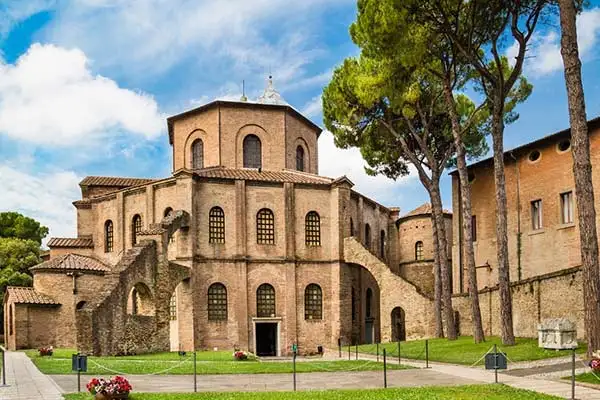
Art, history, culture, and beauty—Ravenna has it all. The only thing it doesn’t have is crowds. It is classy and elegant, yet there’s nothing austere about it. The city retains its Old World Italy appeal but mixes it up with a modern vibe; contemporary structures blend in with the old, even in the historic quarter. Ravenna has a sunny disposition about it with pastel-tinged stucco and portico-punctuated buildings.
Ravenna draws travelers to its stunning Byzantine mosaics that are a UNESCO World Heritage site. They show how the city was a bridge between Europe and the eastern world. But Ravenna largely remains off the expat radar, which is strange, because the city of 165,000 residents has dozens of museums and monuments, along with a vibrant velvet-draped theater and a healthy literary life, as well.
Lecce
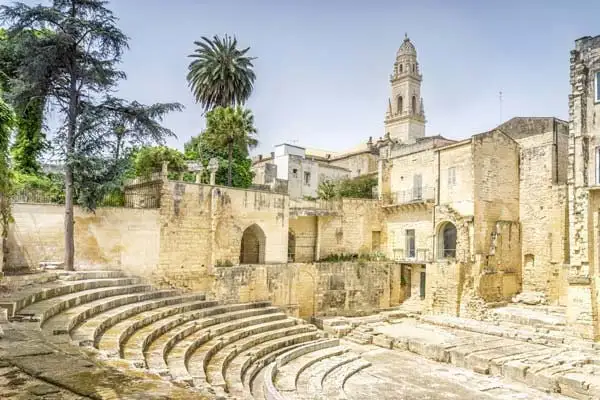
Lecce is baroque heaven—everywhere you look, there are ornate doorways and ochre façades decorated with endless stone cherubs, leaves, birds, flowers, and monsters. It is the cultural capital of Puglia. Most of the old streets are pedestrian and safe. The best time to explore is in the evening, when the main buildings are softly lit and the distracting modern shop windows are dark. Lecce is coming out of hiding, especially now that low-cost airlines are running regular flights to Brindisi, just 25 miles away.
Lecce is a dazzling city all dolled up in baroque embellishments. The buildings of the city are built in local limestone, lathered with joyous ornate carvings and adornments done with such exuberance that it gives the city a sense of gaiety. Lecce is extravagant, even flamboyant. It has so many monuments, churches, palaces, and museums that it has been given the nickname, “The Florence of the South.” With its elegant city center and vibrant feel, it’s impossible not to love Lecce.
Siena

While Florence is the best known city in Italy’s famous Tuscany region, Siena is its best-preserved medieval city, and has made UNESCO’s World Heritage List as the embodiment of a medieval cityscape.
Surrounded by the classic Tuscan landscape of olive groves and vineyards, Siena lies on three hills and was one of Italy’s first city-states. With its medieval houses and small, steep streets, it’s another place right out of a storybook.
This little town is famous for its striped marble duomo and its Il Palio horse race. Dating back to the days when there was fierce rivalry among families in the area, Il Palio is a bareback race around the town’s Piazza del Campo that lasts for less than a minute-and-a-half. Each horse represents one of the city’s 17 contrade (districts), so civic pride and Italian machismo are at stake. Jockeys are allowed to do all manner of things to their opponents (tugging on reins is the only limitation), and it’s not unusual to see riderless horses finish the race.
Click here to return to Home Page for The World's Best Towns and Cities For Retirement, or click on the Previous or Next buttons below to explore more regions...
